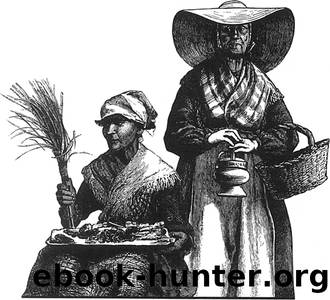Unruly Women by Victoria E. Bynum

Author:Victoria E. Bynum [Bynum, Victoria E.]
Language: eng
Format: epub
ISBN: 9780807843611
Barnesnoble:
Publisher: The University of North Carolina Press
Published: 1992-05-18T00:00:00+00:00
Six
âThe Women Is as Bad as the Menâ
Womenâs Participation in the Inner Civil War
Writing on December 28, 1864, to her brother, newspaper editor Marmaduke S. Robins, Easter Robins mentioned in passing that a neighbor, Nathan York, having been denied an exemption from Confederate service, had declared that âhe [would] not go [into the army] untill they come after him.â1 Such news would hardly have surprised editor Robins. By late 1864 fully two-thirds of North Carolinaâs enlisted soldiers were reported absent without leave. By the warâs end, the state had contributed one-fourth of the Confederacyâs total 103, 400 deserters and one-sixth to one-seventh of the total number of men who served.2 North Carolina had the highest number of deserters of any southern state, and the greatest concentration of these disloyal men hailed from Easter Robinsâs own county of Randolph. There, desertion rates over the course of the Civil War averaged 22.8 percent, compared to a state average of 12.2 percent.3
The ambivalence of the stateâs citizens and political leaders toward disunionâmanifested by North Carolinaâs late entry into the Confederacyâhas long been recognized by historians, although most have dismissed Unionist sentiment within the state as temporary and quickly dissipated by President Lincolnâs call for troops to put down the insurrection at Fort Sumter, South Carolina.4 More recent work, however, emphasizes that opposition and, later, outright disloyalty to the Confederacy were rooted in long-standing political, economic, regional, and cultural divisions among the people of North Carolina that remained strong during and after the war.5 The inner civil war that erupted between 1863 and 1865 in the North Carolina Piedmont reflected a tension between yeoman and planter society that had long existed throughout the South. The large number of nonslaveholding farmers in North Carolinaâs western half, coupled with its unusual degree of ethnic and religious diversity, heightened the explosive potential of this division.6
The participation of women in North Carolinaâs inner civil war has received only scattered attention, although women altered the balance of power between Confederate and Unionist men and their behavior sharply contradicted traditional notions about the ânaturalâ timidity and deference of their sex. Indeed, in their struggle to protect the traditional order of their communities, many North Carolina women displayed a striking level of untraditional disorderliness. They clearly preferred to join the struggle that divided community and state rather than become its victims. The intensity of the confrontation left men little choice but to welcome aggressive behavior from female kinfolk and friends. This was particularly true of disloyal men, who depended on the willingness of women to act in a manner commonly thought unrefined, even âdegraded,â for their sex.
An anonymous North Carolinian heralded the contribution of âboldâ women to southern Unionism in the following lines of a poem sent to Governor Zebulon Vance:
Then chiear up you Union ladies bold
For you[r] courige must be told
How youv withstood abuses
When your property theyâd take
The witty ansers you would make
That would vanish their rude forces.7
Women, this writer recognized, had held their own very well on the âfront
Download
This site does not store any files on its server. We only index and link to content provided by other sites. Please contact the content providers to delete copyright contents if any and email us, we'll remove relevant links or contents immediately.
| Africa | Americas |
| Arctic & Antarctica | Asia |
| Australia & Oceania | Europe |
| Middle East | Russia |
| United States | World |
| Ancient Civilizations | Military |
| Historical Study & Educational Resources |
Cat's cradle by Kurt Vonnegut(14785)
Pimp by Iceberg Slim(13809)
Underground: A Human History of the Worlds Beneath Our Feet by Will Hunt(11850)
4 3 2 1: A Novel by Paul Auster(11822)
The Radium Girls by Kate Moore(11641)
Wiseguy by Nicholas Pileggi(5335)
American History Stories, Volume III (Yesterday's Classics) by Pratt Mara L(5141)
Perfect Rhythm by Jae(5083)
The Fire Next Time by James Baldwin(5034)
Paper Towns by Green John(4815)
Pale Blue Dot by Carl Sagan(4632)
A Higher Loyalty: Truth, Lies, and Leadership by James Comey(4567)
The Mayflower and the Pilgrims' New World by Nathaniel Philbrick(4288)
The Doomsday Machine by Daniel Ellsberg(4254)
Killers of the Flower Moon: The Osage Murders and the Birth of the FBI by David Grann(4198)
Too Much and Not the Mood by Durga Chew-Bose(4105)
The Sympathizer by Viet Thanh Nguyen(4100)
The Borden Murders by Sarah Miller(4033)
Sticky Fingers by Joe Hagan(3918)
